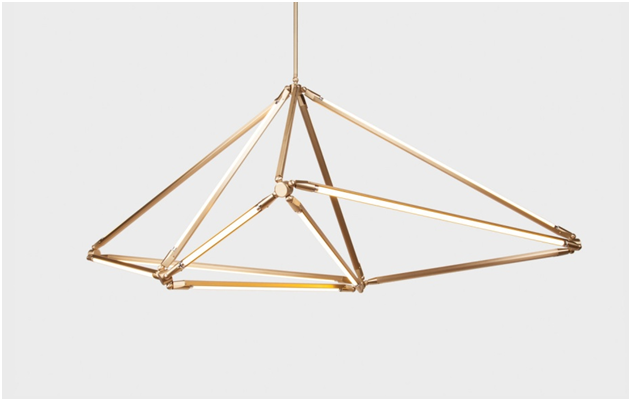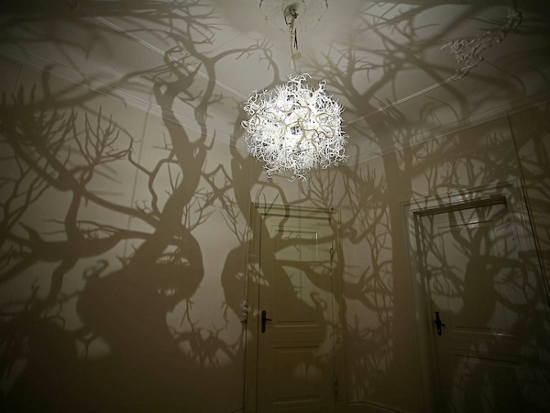![‘Forms in Nature’ by designers Thyra Hilden and Pio Diaz [Source: My Modern Met ]](https://fabbaloo.com/wp-content/uploads/2020/05/image-asset_img_5eb0a42edbcc5.png)
Charles Goulding and Andressa Bonafe of R&D Tax Savers discuss 3D printing in lighting design.
3D printing has played an important role in bringing innovative lighting design to life. The combination of additive manufacturing and more efficient, smaller LED lighting has enabled unprecedented design freedom, which is seen in unique and innovative products, such as the ones referred to as the “Manhattan chandeliers”. Lighting designers and artisans who use 3D printing may be eligible for R&D Tax Credits.
The Research & Development Tax Credit
Enacted in 1981, the federal Research and Development (R&D) Tax Credit allows a credit of up to 13 percent of eligible spending for new and improved products and processes. Qualified research must meet the following four criteria:
-
New or improved products, processes, or software
-
Technological in nature
-
Elimination of uncertainty
-
Process of experimentation
Eligible costs include employee wages, cost of supplies, cost of testing, contract research expenses, and costs associated with developing a patent. On December 18, 2015, President Obama signed the bill making the R&D Tax Credit permanent. Beginning in 2016, the R&D credit can be used to offset Alternative Minimum Tax and startup businesses can utilize the credit against $250,000 per year in payroll taxes.
The Manhattan Chandelier
A recent article at the Financial Times lifestyle magazine “How to Spend It” highlights how innovative designers based in NYC are inaugurating a new genre of lighting design. The piece presents the apparently contradictory aesthetics of these made-to-order, high-end chandeliers that have “architectural but organic” silhouettes and a style that is “modern but warm”. The author, Mark O’Flaherty, gives numerous examples of ground-breaking designs that mix “geometry with nature”, “organic with industrial”. The so-called “Manhattan chandelier” is simultaneously “ancient and futuristic”, “bold yet delicate, hard yet soft, heavy yet light”.
Gabriel Hendifar, from the celebrated Apparatus Studio, points out that in addition to a common ideal, or zeitgeist, the “Manhattan chandelier” movement is about returning to traditional materials, such as brass, glass, porcelain, lacquer and wood, “materials that humans have been trying to make things out of for centuries.” The Financial Times article cites Stephen Alesch, from Roman and Williams, according to which “there is a shift towards traditional and vernacular detailing and form – albeit with a refinement of detail”, he further states that “careful proportion and symmetry appear to be back in style, while period fluff is being eliminated.”
3D Printing for Lighting Design
Additive manufacturing brings the most cutting-edge designs to life with unparalleled ease, giving designers unprecedented freedom in terms of shape, use and mechanisms. 3D printing is especially interesting for made-to-order designs, as it allows for production to meet the scale of demand. Designers that do not follow a mass-production business model can particularly benefit from an economic standpoint.
3D printing can be particularly useful for quick prototyping, which enables designers to assess the viability of their work. The expansion of 3D printing materials, which now include metals, also allows for new production techniques, which can be expedited. 3D printing helps overcome the limitations of classic manufacturing approaches, allowing for enhanced design flexibility and enabling virtually unlimited new forms.
As underlined by the Financial Times, 3D printing is particularly useful for ambitious designers as it allows them to execute complex pieces at relatively low costs. Ease of alteration is also an important aspect, especially as the coding aspect of it reduces the risks involved. The single-step manufacturing process itself eliminates the need for tools and molds and allows for complete production once the digital model is complete. Additional benefits include the reduction of waste, as material quantities are precisely calculated.
3D Printing for Cutting-Edge Lighting Design
There are numerous examples of innovative 3D printed lighting structures, including iconic pieces that mix functionality and artwork. Unveiled in 2006, Luc Merx’s “Fall of the Damned” sheds light on the potential of 3D printed design. The thought-provoking piece brought together two hundred and four bodies around an illuminated axis, creating a dramatic chandelier.
![The Fall of the Damned’ by designer Luc Merx [Source: NSS Magazine ]](https://fabbaloo.com/wp-content/uploads/2020/05/image-asset_img_5eb0a42f69848.png)
Similarly, Linlin and Pierre-Yves Jacques used additive manufacturing in the “Animal Lace” series to build wall-mounted lamps shaped as the heads of a dear, bear, and elephant. The decorative pieces are made out of white polyamide and gloss paint and incorporate lighting inside.
![‘Animal Lace’ designed by Linlin and Pierre-Yves Jacques [Source: Design Swan ]](https://fabbaloo.com/wp-content/uploads/2020/05/Chandelier-Image2_img_5eb0a42fcb76d.png)
Also mixing art and functionality, Dutch artists Thyra Hilden and Pio Diaz created “Forms in Nature”, a chandelier (image top) that “turns any room into a wild forest made of haunting oversized shadows.” The designers utilize a software program that multiplies and refines original hand drawings to create a unique pattern. The components are subsequently 3D printed with special hardened plastic powder that can withstand the heat from the light bulb and will stay bright white over time. These elements are finally put together by hand, in an eight-hour process.
3D Printing and NYC Lighting Design
David Weeks
![‘LORRE’ created by the David Weeks Studio [Source : David Weeks Studio ]](https://fabbaloo.com/wp-content/uploads/2020/05/Chandelier-Image4_img_5eb0a43026200.png)
NYC-based designer David Weeks has experimented with additive manufacturing in lighting design. The David Weeks Studio has created LORRE, a proof of concept installation exploring the interaction between space, light, and material. It includes 3D printed kinetic lights made of nylon plastic, which were printed using selective laser sintering, an additive manufacturing technique that utilizes heat from a high-power laser to fuse together powdered material. The sculptural lighting piece is based on the idea of altering a space with simple lines. Using the inherent conductivity of copper cables, the light source is free to move without the constraints of wiring.

Apparatus Studio
In a recent interview, Gabriel Hendifar of Apparatus stated that 3D printing is often a part of his design process. In his own words, “once I have a solid idea for the mood and shape of a new product, I hand sketch and review those sketches with our design team. Then we explore proportion using digital modeling, and generally make a 3D print or full-scale model to experience a piece in real space.”
![The Apparatus Showroom [Source: Curbed ]](https://fabbaloo.com/wp-content/uploads/2020/05/image-asset_img_5eb0a430c87c1.png)
Lindsey Adelman
Lindsey Adelman, who is considered a pioneer of contemporary New York lighting design, has pointed out how 3D printing enables major cost savings especially in relation to tooling and mold-making. For instance, ceiling medallions that often accompany chandeliers can be produced through additive manufacturing and subsequently electroplated in copper to match the finishes of the entire piece. Lindsey has used 3D printing in jewelry design and production.
Bec Brittain

Known for its detailed, crystalline work, Bec Brittain also incorporates 3D printing into the design process. In a 2014 interview, she underlined the benefits of 3D printed hardware prototypes, which enable designers to see and test pieces in a back-and-forth process between digital and physical models. Many of her products, such as the iconic SHY, have modular hardware and thus allow for numerous different configurations. 3D printed prototypes facilitate the testing process for new, customized shapes that meet demands of different spaces.
![‘SHY 08.1’ designed by Bec Brittain [Source: Bec Brittain ]](https://fabbaloo.com/wp-content/uploads/2020/05/image-asset_img_5eb0a43181b72.png)
Gabriel Scott
![The GABRIEL SCOTT Showroom in NYC [Source: Design Milk ]](https://fabbaloo.com/wp-content/uploads/2020/05/Chandelier-Image9_img_5eb0a431e2b85.png)
The Canadian furniture and lighting brand Gabriel Scott started operations in NYC in 2014. With a background in architecture, industrial design and jewelry-making, Gabriel Kakon and Scott Richler bring a multidisciplinary set of skill and style to the furniture and lighting world as GABRIEL SCOTT. In a 2017 interview, they highlighted the importance of 3D printing for quick prototyping.
![The GABRIEL SCOTT Showroom in NYC [Source: Design Milk ]](https://fabbaloo.com/wp-content/uploads/2020/05/image-asset_img_5eb0a43254a49.png)
Robert Debbane
Brooklyn-based designer Robert Debbane explores the interaction between traditional art-making and digital processes. Of Lebanese descent, he takes inspiration from Islamic tile patters, nature, and images of outer-space to create innovative 3D printed lighting designs that are made-to-order. The sculptural lamps and chandeliers are printed in ABS plastic and in nylon to create a combination of different amounts of lighting passing through to generate geometric designs.
![Lighting design by Robert Debbane Studio [Source: Robert Debbane Studio ]](https://fabbaloo.com/wp-content/uploads/2020/05/image-asset_img_5eb0a432cb7be.png)
Conclusion
3D printing opens the way for unprecedented design freedom, enabling lighting designers to reach new creative and aesthetic heights. As NYC-based designers strive to leave their mark through ground-breaking, unique work, additive manufacturing can be an invaluable tool to open up new possibilities. Artists and lighting designers who engage in 3D printing of lighting fixtures should take advantage of R&D Tax Credits to support their innovative efforts.











Charles Goulding reviews 3D printing news from Davos.